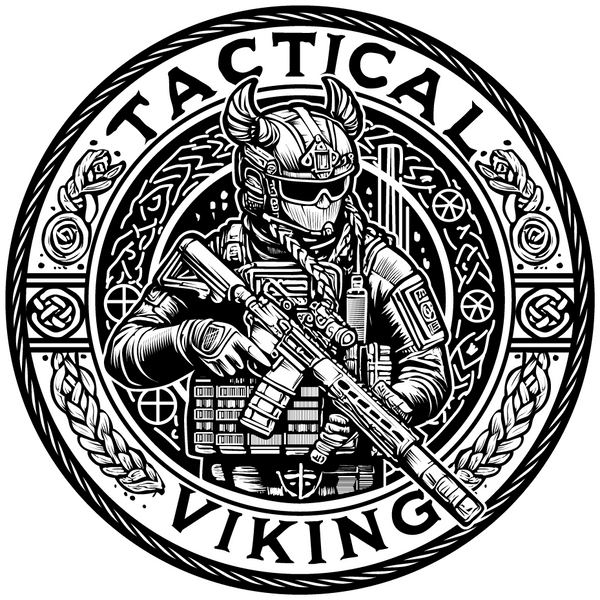
The First Battle of Ypres
Share
The First Battle of Ypres: A Defining Moment for Warrior Endurance
October 20, 1914, marks the beginning of the First Battle of Ypres, a pivotal encounter during the early months of World War I. As the British Expeditionary Force (BEF), French troops, and remnants of the Belgian Army clashed with the advancing German forces near the strategic town of Ypres in western Belgium, a new chapter in military history was being written—one not just of military strategy but of warrior endurance in its rawest form.
For patriots, veterans, and military historians alike, this battle was more than a clash of empires. It was the moment the world was introduced to the hellish nature of trench warfare, the immovable will of the soldier, and the eternal bond forged through shared suffering.
A War Meant to End Quickly Becomes a Test of Warrior Endurance
In the early days of World War I, both sides believed the war would be over by Christmas. But by October 1914, that illusion was shattered. The Germans had hoped to sweep through Belgium and northern France with speed and decisiveness. The Allies, however, refused to be moved.
During First Battle of Ypres, as they dug in around the town, both sides began the process of entrenchment. The battlefield, once envisioned as fluid and fast-moving, transformed into a static killing field. It was here that the first seeds of prolonged trench warfare were sown. And it was here that soldiers, many barely out of their teens, were introduced to an entirely new dimension of combat—grueling, unrelenting, and soul-scarring.
Warrior endurance wasn’t just about physical strength anymore. It was about surviving constant artillery barrages, poison gas, sleepless nights, and the psychological torture of waiting for the next whistle that signaled another suicidal charge over the top.
Brotherhood in the Mud: The Human Element of Warrior Endurance
The trenches around Ypres quickly turned to mud. Rain, blood, and the churn of boots made every day a struggle. Yet, through this misery, a unique and unbreakable bond formed between the men who shared the same strip of hell.
For soldiers on both sides, but especially the Allied defenders who held Ypres against overwhelming odds, survival depended not just on training and supplies—but on each other.
This sense of camaraderie under pressure is a hallmark of warrior endurance. It's what modern-day veterans recognize immediately when they hear stories from the front. The thousand-yard stare. The gallows humor. The unwavering loyalty to the man beside you in the worst conditions imaginable.
The Salient and the Sacrifice: Ypres Becomes Symbolic of Warrior Endurance
The city of Ypres became a symbol—first of resistance, then of sacrifice, and ultimately, of legacy.
As wave after wave of German troops tried to break through the salient (a vulnerable bulge in the front line), the British and French lines bent, cracked, but refused to break. The cost was staggering. Nearly 160,000 casualties were suffered on both sides during the first battle alone.
But it was not in vain.
The warrior endurance shown by those who held Ypres laid the groundwork for a defensive line that would resist for years. It proved to the world that determination, discipline, and courage could stand against overwhelming firepower and relentless aggression.
A Generation’s Baptism by Fire: Lessons in Warrior Endurance
For many, Ypres was their first real taste of war. It was the beginning of what would later be called the “Lost Generation”—young men who traded youth and innocence for duty and sacrifice.
The battle exposed the inadequacies of 19th-century tactics in a 20th-century war. But more importantly, it revealed the inner steel of those who fought. Whether they were professional soldiers or newly recruited volunteers, the men at Ypres proved that the human spirit, when tested in the fires of war, could endure.
In many ways, this battle served as a brutal training ground for the conflicts to come: Verdun, the Somme, Passchendaele—all would follow. But none could erase the significance of Ypres. It was the crucible in which warrior endurance was reborn.
Legacy Beyond the Battlefield: Warrior Endurance in the Modern Mind
The stories from Ypres aren’t just historical notes; they are passed down through military families, taught in academies, and studied by modern tacticians.
To the patriotic, the story of Ypres is more than a battle—it’s a philosophy. A testament to the unyielding human will. A reminder that no matter how dark the hour, how outnumbered or outgunned, the soul of the warrior endures.
Even today, standing on the now-peaceful fields of Flanders, one can almost hear the distant thunder of artillery, the shouted orders, the silence that follows the fallen. These echoes remind us that warrior endurance is not just a relic of the past—but a living tradition carried by those who serve, fight, and sacrifice for something greater than themselves.
Conclusion: The Eternal Relevance of Warrior Endurance
October 20, 1914, may have marked the start of a single battle—but in truth, it ignited something far more profound. It awakened a generation to the realities of industrialized warfare, yes—but also to the unbreakable strength of those who would not yield.
As patriots, soldiers, and citizens who honor service, let us remember the First Battle of Ypres not just for its historical value—but for what it teaches us about the very nature of warrior endurance.
In mud and blood, surrounded by the horrors of a new kind of war, men held the line—not because they had to, but because they would not do otherwise. That is the legacy forged in fire. And that is the heartbeat of a warrior.
